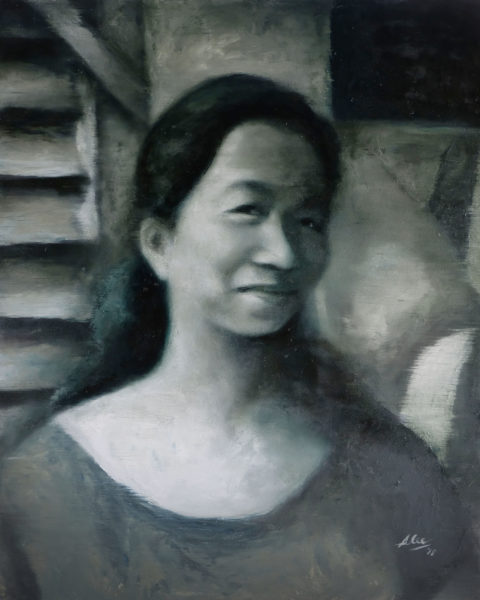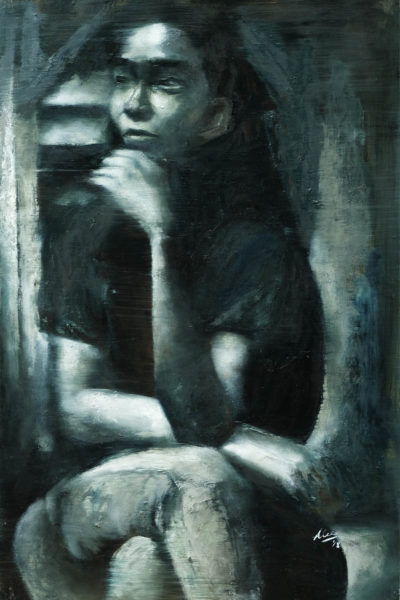
The Work of Art in the Age of Being Together
In Kasimbahay, Alee Garibay shows how tracing the outlines of a friend’s face is its own kind of muscle memory, obtained through hours spent relating to one another. The title, which means to share a house (magkasing-bahay), describes how our most immediate relations teach us about life, coexistence, and growth.
“Portraiture is my first love as a painter,”[1] she wrote in an interview prior to this show. In these impressionistic accounts of the people who make and share her home, Garibay also attempts to convey the divine. Re-imagining the household as a church simultaneously becomes an attempt to reclaim the church not as a hall of worship, but as a transformative space where the banal becomes sacred and the spiritual is felt in the ground. Here, portraiture becomes not a tool for enabling narcissism, but a means to revisit the sainted and iconic.
“As I did the portraits,” shares Garibay, “I began to ponder at how the stories that we have come to know as ‘gospel’ are really about ordinary people who found—and made—meaning in their life through a direct and contemplative engagement of their life experiences.”
To Garibay, portraiture is not simply a series of moments, but a matter of being present in that moment – an attentiveness and patience that also links us to the past. The black and white tones of the works recall the daguerreotype – Louis Daguerre’s method of printing on silver plates, which became the first publicly available photo process. Referencing this age old technology, Garibay provides a sense of a legacy, lending gravity only available to images seen in memoriam. If a daguerreotype, at the time, conveyed awareness of what it meant to capture a moment, Garibay’s portraiture expresses how the hand can convey what has been made possible by keeping one’s heart open.
The practices and methods distilled in Kasimbahay express not only a profound appreciation of Garibay’s intimate relations, but an awareness of her artistic practice: its embedded histories and the technologies it must coexist with in the age of digital reproducibility. Within the contradicting elements of portraiture, photography, and contemporaneity, Garibay composes an anachronistic narrative of radical love, reframing an ethics of hospitality—of acceptance and generosity—in an age of increasing distrust.
[1] Personal communication, 27 September 2018.
Alice Sarmiento
Works
Documentation

















